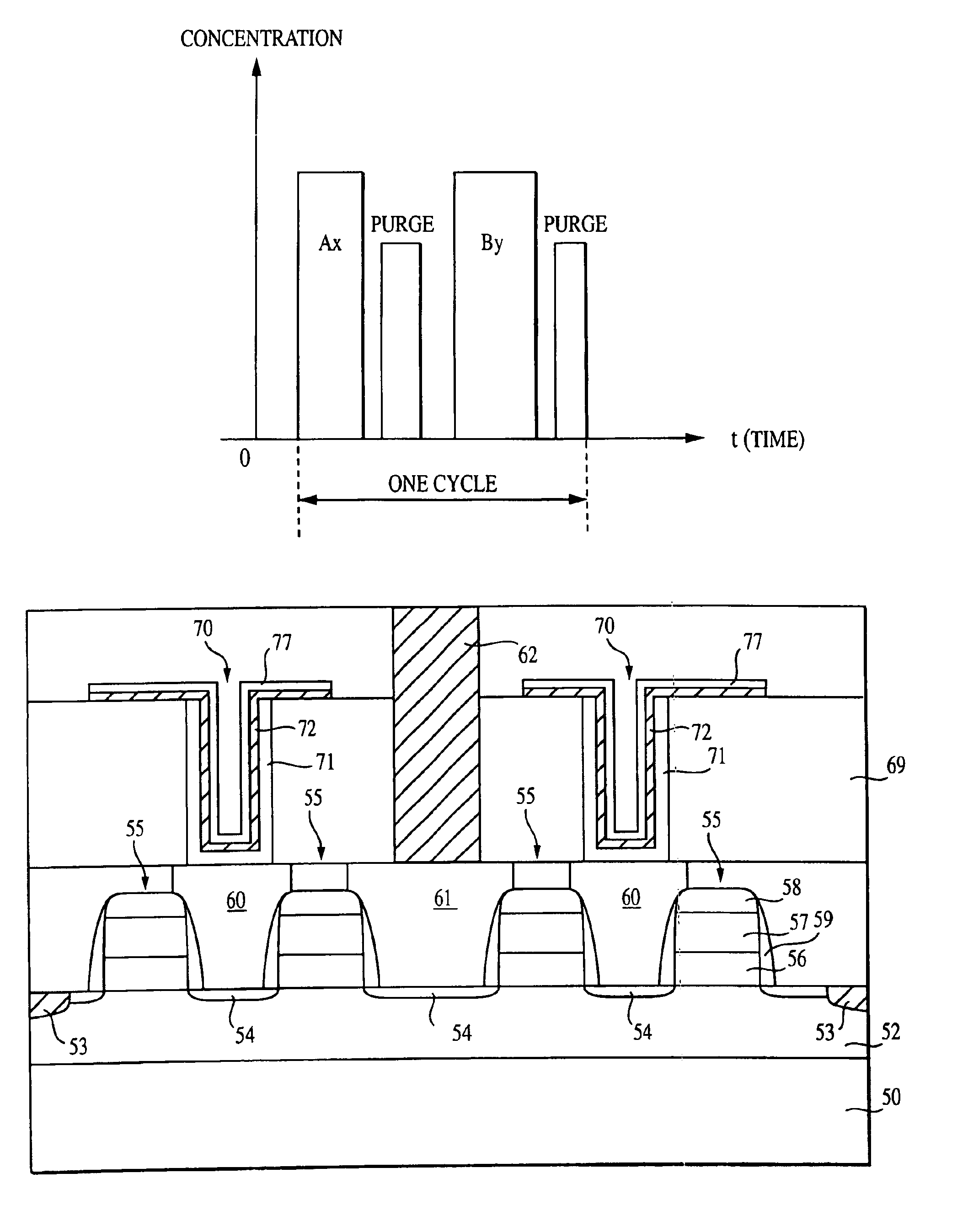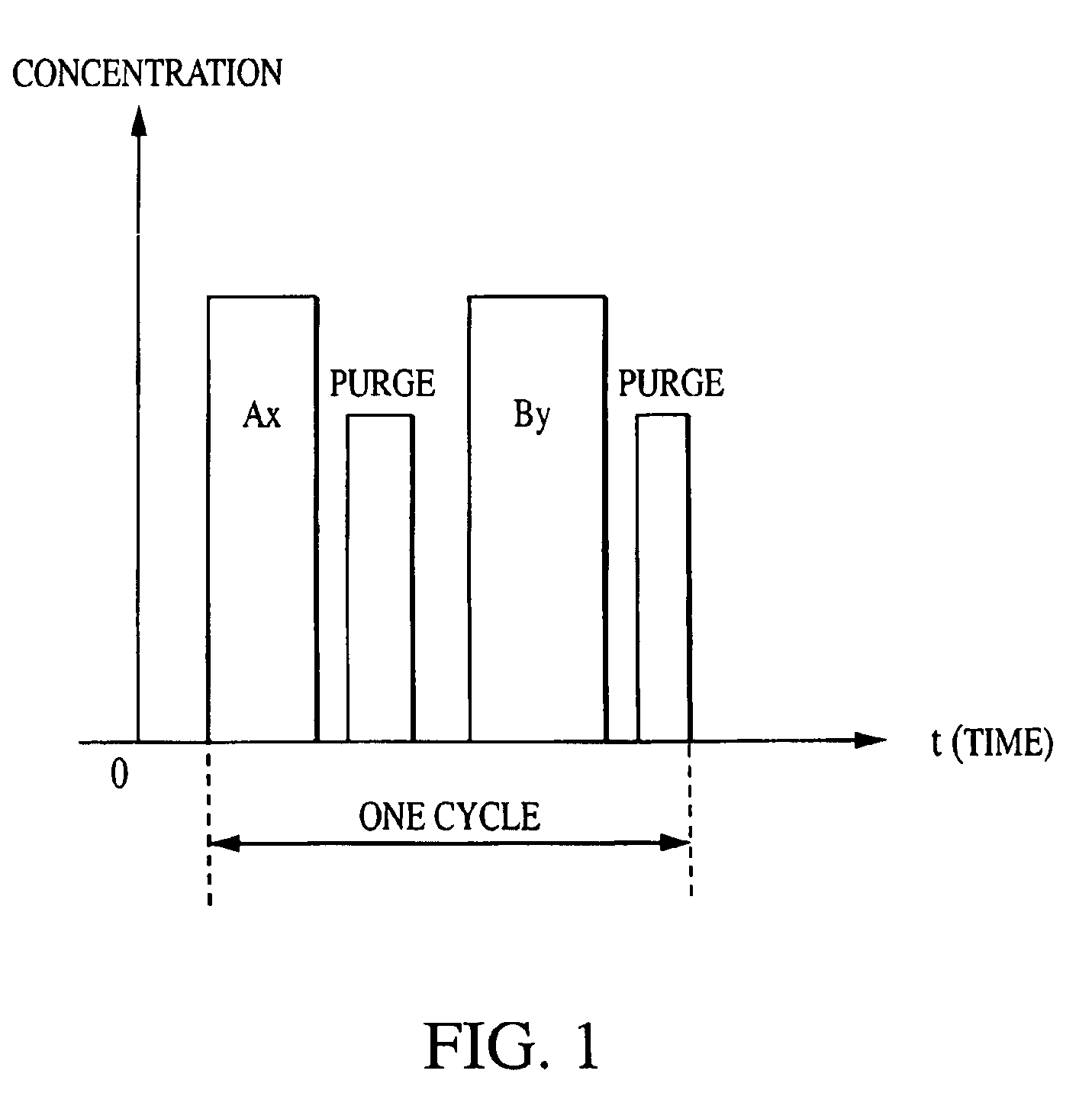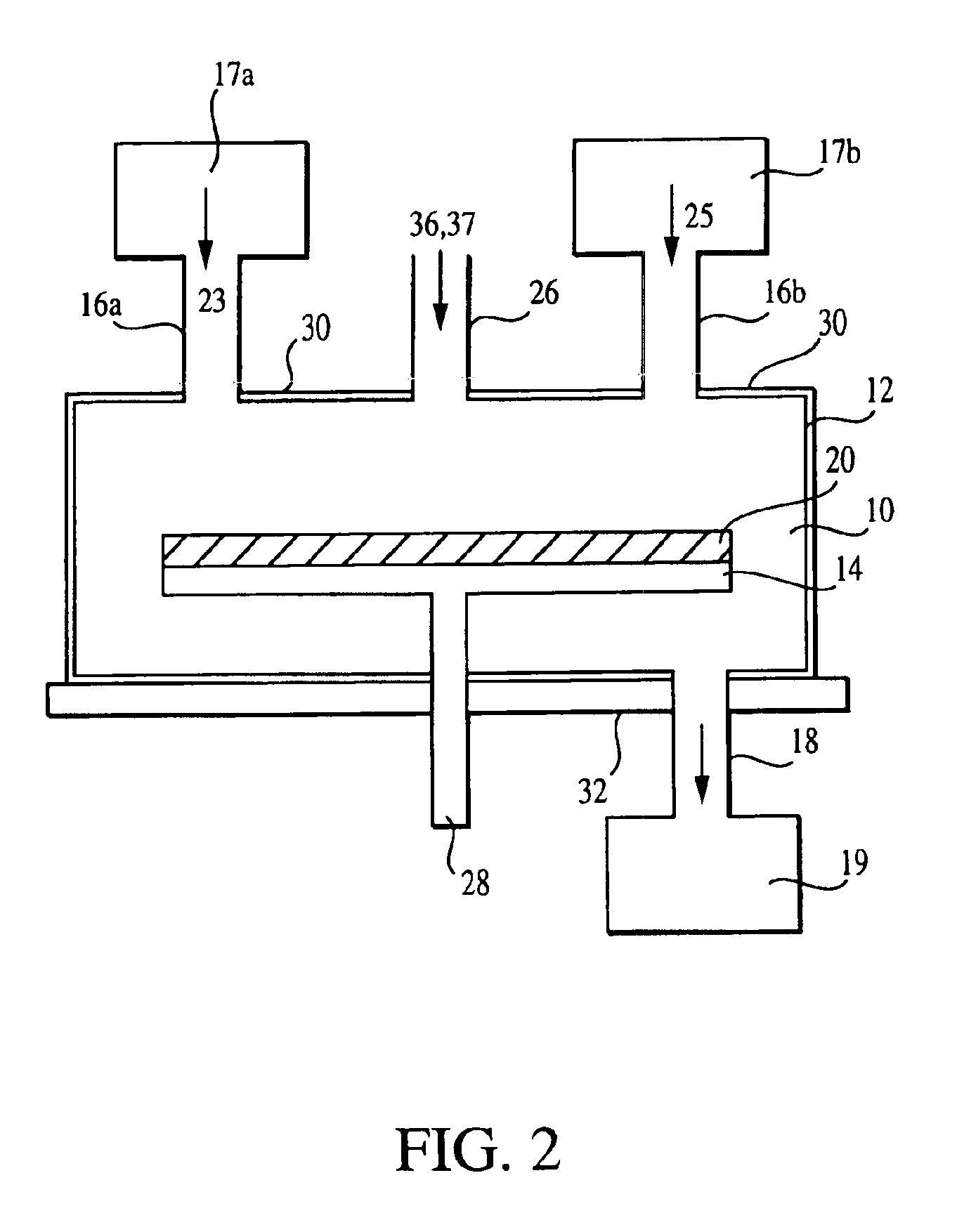Process for low temperature atomic layer deposition of RH
a technology of atomic layer deposition and rh, which is applied in the direction of chemical vapor deposition coating, coating, transistor, etc., can solve the problems of poor conformality of rf sputtering process and damage to pores or holes in thin films, and achieve good step coverage and good step coverage
- Summary
- Abstract
- Description
- Claims
- Application Information
AI Technical Summary
Benefits of technology
Problems solved by technology
Method used
Image
Examples
example
[0052]first precursor: 5 sccm dicarbonyl cyclopentadienyl rhodium [CpRh(CO2)] at about 100° C. and for about 5 seconds[0053]first purge gas: 50 sccm He for about 5 seconds[0054]second precursor: 50 sccm O2 for about 5 seconds[0055]second purge gas: 50 sccm He for about 5 seconds
[0056]Although the invention has been described with reference to the formation of an upper rhodium plate of an MIM capacitor, the invention is not limited to the above embodiments. Thus, the invention contemplates the formation of high quality rhodium films with good step coverage that can be used in a variety of IC structures, for example as seed layers for electroplating processes, as fuse elements or as bond pads, among many others.
[0057]The MIM capacitor 70 of FIG. 4 including the rhodium film 77 formed according to a method of the present invention could further be part of a memory device of a typical processor based system, which is illustrated generally at 400 in FIG. 6. A processor system, such as a ...
PUM
| Property | Measurement | Unit |
|---|---|---|
| temperature | aaaaa | aaaaa |
| temperature | aaaaa | aaaaa |
| thickness | aaaaa | aaaaa |
Abstract
Description
Claims
Application Information
 Login to View More
Login to View More - R&D
- Intellectual Property
- Life Sciences
- Materials
- Tech Scout
- Unparalleled Data Quality
- Higher Quality Content
- 60% Fewer Hallucinations
Browse by: Latest US Patents, China's latest patents, Technical Efficacy Thesaurus, Application Domain, Technology Topic, Popular Technical Reports.
© 2025 PatSnap. All rights reserved.Legal|Privacy policy|Modern Slavery Act Transparency Statement|Sitemap|About US| Contact US: help@patsnap.com



